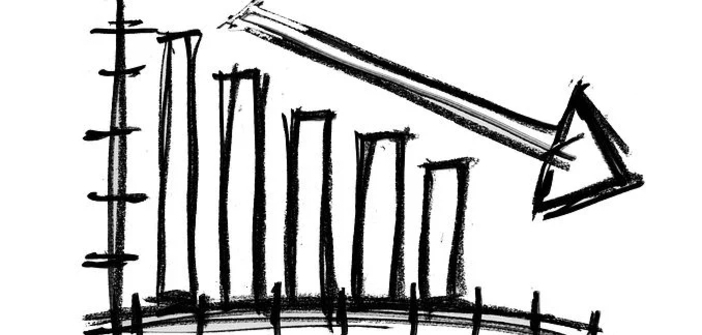The estimates from Insee are directly linked to the lockdown, as it has been observed for the past two weeks, and the behavioral changes it has caused. Using various sources, including companies themselves, administrations, the Carte Bancaire group, and many others, the Institute estimated that the loss of activity would range from 90% in construction to 50% in industry, and only 4% in agriculture and agri-food industries.
The hardest hit to the country’s economy would be the 36% decline experienced by commercial services, which generate 56% of the country’s GDP. The shock is therefore very severe, at least twice as significant as what Chinese figures suggested (a 15% to 20% GDP decline in January-February).
A priori, the shock should be of the same magnitude in Italy, Spain, and the United Kingdom. It is not certain that it would be much less in Germany, whose industry was already affected by the drop in Chinese imports and global trade in general. The final impact will obviously depend on the duration of the lockdown, as well as the exit trajectory. To shed light on this, there could be two very different scenarios.
The rosy scenario: secure exit, 10% GDP decline this year followed by a powerful rebound in 2021.
Starting from Insee’s estimates, assuming that the lockdown would last for two months and be followed by a gradual but uninterrupted recovery, in parallel with other European countries – and benefiting from the slightly advanced Chinese recovery — one could still arrive at an annual GDP decline of over 10% in 2020, followed by a strong rebound in 2021 (+12%), allowing the pre-crisis GDP level to be regained by mid-2021.
Clearly, this is an optimistic scenario, in which the excess savings accumulated during the lockdown period would be partially consumed, where the damage suffered by companies is limited enough for postponed investment projects to be relaunched, and where good synchronization of European recoveries ensures robust external demand.
The budget deficit would reach 10% of GDP, or even more, mainly due to the drop in tax revenues, primarily VAT: according to its estimates, Insee assumes that the level of consumption during the lockdown would also decrease by 35% compared to normal. A necessary condition for this optimistic scenario to unfold is that fiscal policies do not seek to offset the crisis’s losses through spending cuts or tax increases.
From this perspective, funding the deficits should not pose problems in 2020, as the ECB has put in place an ambitious bond-buying program, the PEPP1 — at least 750 billion euros, which should be close to the increase in the monetary union’s deficits this year — without major constraints, as the self-imposed rule of a 33% holding limit for a specific asset is lifted for this new buying program. It might be different in 2021 if the eurozone states do not manage to agree on collective funding for their epidemic-fighting efforts.
The black scenario: exit, then relapse, a profile whose social and political consequences could be severe.
If the conditions for exiting the lockdown under good health conditions were not met, a restart of the epidemic would become likely. In this case, one might fear that initially, the authorities would hesitate, lacking all available information (the virus seems to have a relatively slow mutation time, but it does mutate), before resolving to impose a total or partial lockdown again.
For the country’s economy, it would be a true disaster scenario. The initial recovery would wither, bankruptcies would multiply despite all preventive measures, as banks could not afford to extend credit lines ad infinitum.
Larger companies, considered necessary for the country’s security or job maintenance – think of transportation or the automotive industry – could be nationalized, but this would hardly change the overall picture.
The simulation predicts a weak recovery upon lockdown exit, followed by a relapse, then weak growth, hindered by the damage inflicted on companies and the sharp rise in unemployment. To set the scene, GDP would fall by 16% in 2020, by another 2% in 2021, and even if growth resumed afterward, the activity level would still be 15% lower by the end of 2022 than at the start of the crisis, suggesting an unemployment rate around 20%, unprecedented since the 1929 crisis. To fill the job deficit, real wages would theoretically need to drop significantly, which, in the absence of inflation, is unlikely to occur. The State would very likely attempt a massive stimulus plan, which would obviously raise the question of its financing by the markets.
There is no need to go further to understand that under such circumstances, the country’s and Europe’s political and social structure would be shaken. Faced with abyssal budget deficits in Southern countries, devaluation would appear as the only way out, because, if saving Greece, or lending to Spain, Portugal, and Ireland collectively was possible in 2012, the amounts involved would be beyond the credit capacity of Northern savers and even the ECB’s absorption capacity if France, Italy, and Spain were financially distressed.
Hamiltonian moment, or euro breakup?
On the side of those advocating for the federalization of the European Union or the eurozone, it is believed that the crisis could offer this “Hamiltonian moment,” which they have long dreamed of, named after the finance minister of the young federation of American states struggling for independence, who decided to assume the debts of the freshly federated states in 1790. History may prove them right, but it is just as possible that the euro bears the brunt of the catastrophe, to give devastated countries some leeway.


